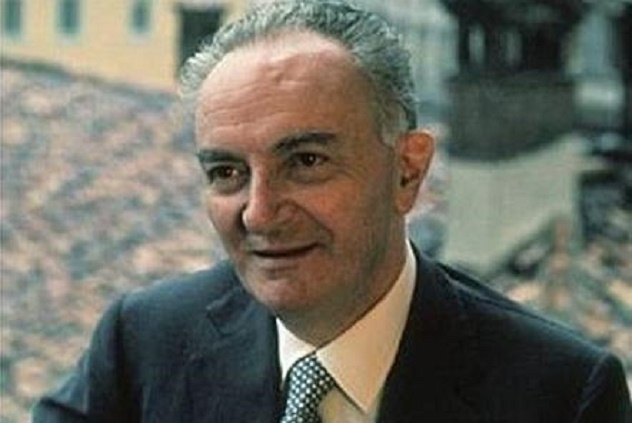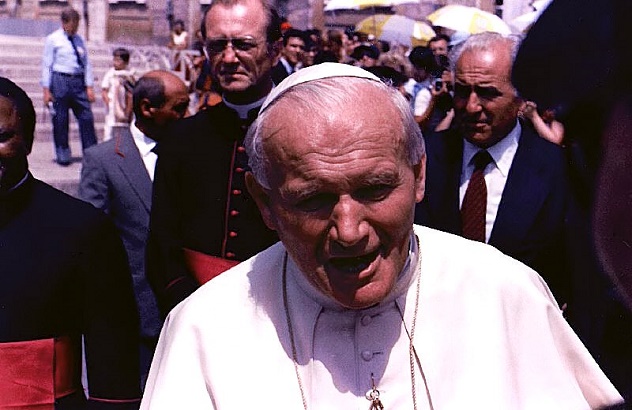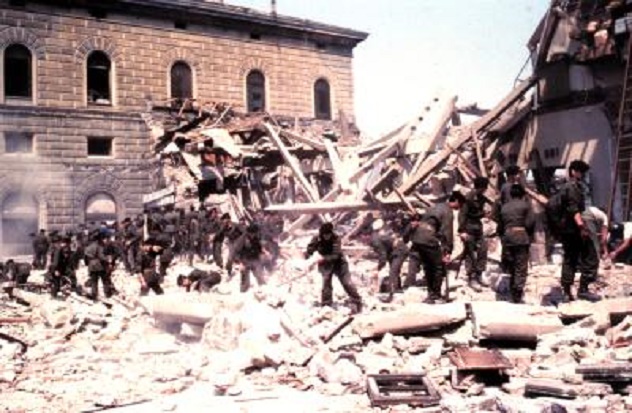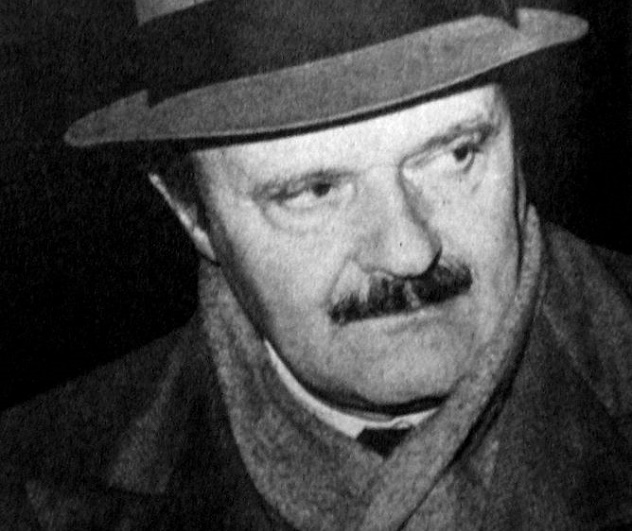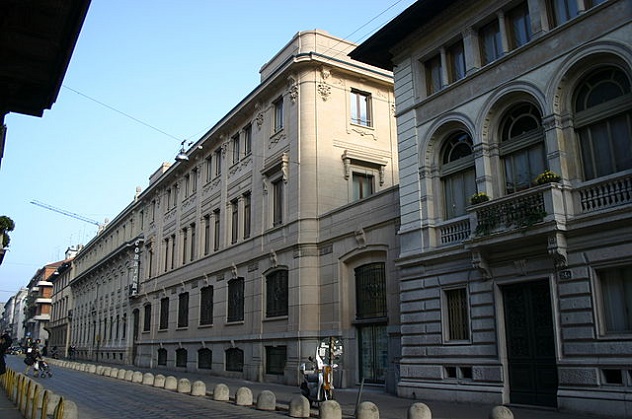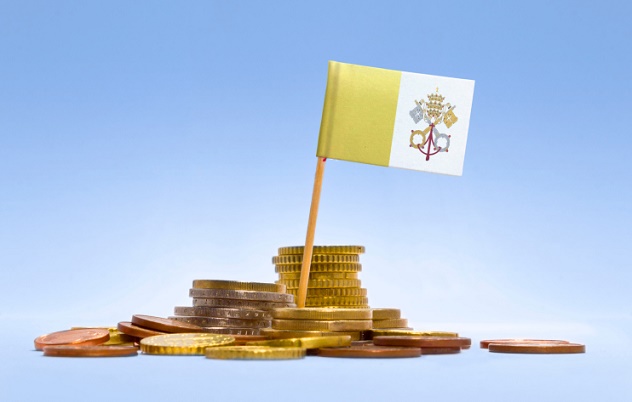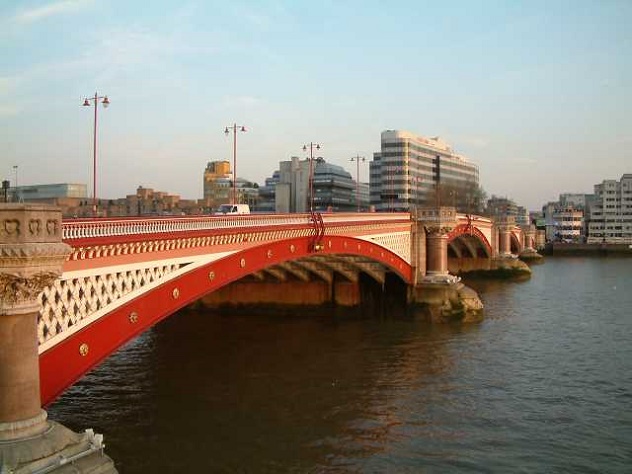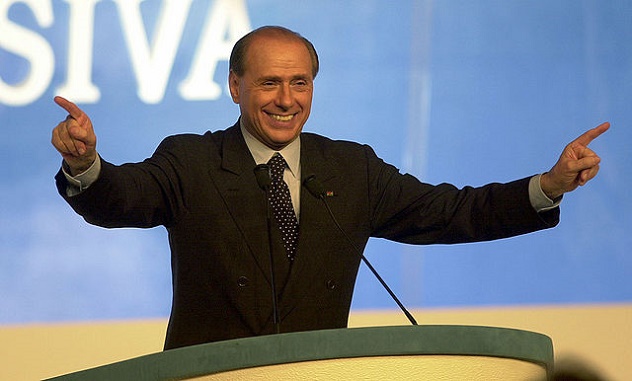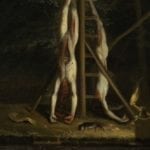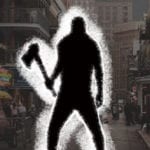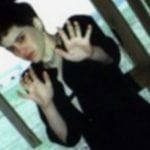How could such events be connected? Well, they were all apparently linked to a secret organization known as Propaganda Due (P2). History is littered with conspiracy theories, most of them unproven or actively ridiculous. But the P2 were very real—as were the men behind it.
10Michele Sindona
In 1979, Michele Sindona was a desperate man. Despite rumors of his Mafia ties and shady dealings, he had risen to become Italy’s most prominent banker, even acting as a financial adviser to the Vatican. But he overreached when he tried to enter the American market, overpaying to take control of the Franklin National Bank, which promptly collapsed amid accusations of financial irregularities and outright theft. As the authorities closed in, Sindona tried to buy time by staging his own kidnapping. When that didn’t work, he turned nasty. The liquidator of his Italian businesses was shot in the head, and Sindona began hinting that he would name names unless the Italian authorities bailed him out. Nothing worked. He was mysteriously poisoned in 1986, six years into his prison sentence. But the Sindona investigation led the Italian authorities to Joseph Crimi, a Sicilian doctor who had assisted with his bogus kidnapping. The police were particularly interested in a trip he had suddenly taken to Tuscany to meet with an obscure businessman named Licio Gelli. In 1981, they obtained a warrant to search Gelli’s villa, hoping to find evidence of a connection to Sindona. They found much more than that. In a locked safe, the police found the records of a clandestine Masonic lodge known as Propaganda Due. Its members included three cabinet ministers, the son of the last Italian king, and 43 members of parliament. It also included the heads of all three Italian intelligence agencies, 213 other senior military officers, and a raft of senior figures in the media and business worlds. It was, it appeared, a “state within a state.” And its leader was Licio Gelli.
9Licio Gelli
Nobody knows exactly how Licio Gelli gained power, or how he used it once he had it. He was apparently a ferocious anti-Communist from a young age—at 17 he volunteered to fight for Franco’s fascist forces during the Spanish Civil War. During World War II, he served as a liaison officer to the German SS, gaining a reputation for torturing partisan prisoners. After the war, he possibly helped organize the “ratlines” that helped wanted Nazis escape Europe. But Gelli was always more complicated than that. After his capture by the Allies, he was saved from execution by a Communist partisan leader, who claimed that he had secretly been working for the resistance the whole time. During the 1950s, Gelli was sporadically involved in politics but apparently lost interest and moved back to his native Tuscany, where he became a moderately successful mattress salesman and eventually started his own clothing factory. In secret, however, Gelli was rising through the ranks of Italian freemasonry. In 1967, he gained permission to start his own lodge: the P2. Through his second-in-command, Umberto Ortolani, Gelli was able to befriend senior figures in the Italian intelligence services, who gave him access to their files on prominent Italian citizens. This was fertile blackmail territory, and Gelli reveled in the power they gave him. According to the Socialist Party politician Vanni Nistico, Gelli even produced nude pictures of Pope John Paul II, photographed next to his swimming pool, and ominously remarked: “Look at the problems the secret services have. If it’s possible to take these pictures of the Pope, imagine how easy it is to shoot him.” From its base in the intelligence community, the P2 lodge rapidly spread its tentacles into politics, business, and the media. Its appeal was clear: The powerful brothers of P2 were pledged to help each other, and membership was a sure route to wealth and influence. And hanging over everything was the threat of Gelli’s files and the power of his lodge. Once Gelli clued them in to the P2’s existence, many prominent Italians simply decided that they couldn’t afford not to join. By the 1980s, Gelli was powerful enough to order meetings of Italy’s top military leaders at his private villa. By the time his lodge was exposed, Gelli was perhaps the most powerful man in Italy. But what did he want? Was he, as he always claimed, motivated to “stop Communism in its track” and save the Italian people from themselves? Or perhaps, as one P2 member later observed, he was “a pragmatist without ideals . . . with hindsight I realized that he has never desired a strong government. In a strong government, mediators have no role.”
8Umberto Ortolani
But P2 activities weren’t just limited to Italy. Gelli’s second-in-command, Umberto Ortolani, based himself in Uruguay, where he was ambassador for the Knights of Malta and owned a prominent local bank. From Uruguay, Gelli and Ortolani established lodges throughout South America, which was fertile ground for arms trading and money laundering. In Argentina, where Ortolani was a major media tycoon, the P2 apparently helped restore Juan Peron to power in 1973. At Peron’s inauguration, former Italian prime minister Giulio Andreotti said he “saw Peron kneel in front of Gelli.” During World War II, Ortolani had been a senior figure in Italian military intelligence, and he maintained strong contacts in the intelligence world. According to the Canadian economist R.T. Naylor, his bank was a key player in a P2 plan to devalue the lira by encouraging capital flight to South America in violation of Italy’s currency control laws. When this failed to destabilize the government, the lodge changed track and focused on “constructing a parallel government in which the real power would lie.” It has also been alleged that Gelli and Ortolani were in business with Klaus Barbie (pictured above), the infamous Nazi “Butcher of Lyon.” After escaping Europe at the end of the war, Barbie settled in Bolivia, where he became a major drug trafficker. He was also known to have contacts in Western intelligence agencies and boasted of having planned the military operation that resulted in the capture of Che Guevara. In 1980, Barbie and the Italian right-wing terrorist Stefano delle Chiaie were key players in the “Cocaine Coup” that briefly overthrew the government of Bolivia. He was deported to stand trial in France in 1983.
7Francesco Pazienza
The P2’s influence even extended to American politics. During the 1980 election, the lodge sought to use its usual dirty tricks against Jimmy Carter, who was considered too soft on Communism. In 1985, a Wall Street Journal investigation sensationally revealed that the lodge had been behind a devastating scandal that emerged at the height of the campaign, probably as part of a “larger disinformation scam” aimed at affecting the outcome of the election. Earlier in his term, Carter’s brother, Billy (pictured above), who was widely considered to be an embarrassment, had courted controversy by accepting a loan from the government of Libyan dictator Muammar Gadhafi. The scandal had largely been forgotten, but P2 affiliate Francesco Pazienza made sure it came back. Working with American journalist Michael Ledeen, Pazienza planted a story claiming that Billy Carter had taken yet another loan from Gadhafi. It also claimed that Billy had a secret meeting with Palestinian leader Yasser Arafat. “Billygate” became big news again, and Carter’s flagging approval ratings took another blow. An Italian court subsequently convicted Pazienza of masterminding the scandal. Ledeen was not charged, but the verdict specifically named him and he was later accused of accepting $120,000 from Italian military intelligence shortly after the story was published. He denied all charges and eventually rose to a seat on Ronald Reagan’s National Security Council. Meanwhile, Licio Gelli, an obscure Tuscan industrialist, was given an invitation to Reagan’s 1981 inauguration.
6Stefano Delle Chiaie
Probably the most controversial aspect of the P2 lodge was its alleged involvement with right-wing terrorists during Italy’s violent “Years of Lead.” The most notorious of these was Stefano delle Chiaie, who has been accused of involvement in the 1969 Piazza Fontana bombing, the 1980 Bologna station bombing (pictured above), and a rumored plan to overthrow the government and replace it with a dictatorship spearheaded by Prince Valerio Borghese. He was certainly involved in the massacre of left-wing protesters in Spain and seems to have worked as an assassin for Barbie while in South America. The P2 are widely suspected of involvement in the Bologna bombing and are usually linked to the Borghese coup plan as well. In 1985, the Italian authorities formally accused Gelli of helping delle Chiaie to plan the Bologna bombing, which killed 85 people and wounded around 200. The charges didn’t stick against either man, but Gelli and Francesco Pazienza were eventually convicted of deliberately obstructing the investigation into the attack. Gelli was sentenced to 10 years, reduced to seven on appeal. It was a dramatic sign of how far he’d fallen.
5Roberto Calvi
On the face of things, Roberto Calvi was an unlikely candidate for membership in a shadowy illegal organization. Known as “the man with the eyes of ice,” he had risen from a lowly clerk to become head of the Banco Ambrosiano, one of the largest financial institutions in Italy. He had a particularly close relationship with the Vatican, hence his other nickname: “God’s Banker.” But beneath the surface, Calvi was a deeply paranoid and insecure man, always in search of powerful patrons to protect him. His earliest mentor was Michele Sindona, who introduced him to the P2. Before long, he was Gelli’s most prized asset, an easy source of funding for the P2 and its members. In fairness to Calvi, his desire for a powerful patron wasn’t entirely paranoia—he really did need protection from the law. Although Calvi had risen to become head of the bank, he wasn’t a personally wealthy man. Yet his pathological secrecy and desire for control meant he couldn’t bear to be a simple employee. So for years he had been giving huge loans to overseas “ghost companies,” which were actually controlled by Calvi. The money would then be transferred to a different ghost company, still secretly controlled by Calvi, who would bring it back into Italy and use it to buy shares in the parent bank. Essentially, Calvi bought control of the company using its own money, while increasing profits and share price. The plan was simultaneously brilliantly creative and completely stupid since it depended entirely on a stable exchange rate. The ghost companies had to operate in dollars, while Ambrosiano shares traded in lira, meaning Calvi was taking dollar loans to buy assets in lira. When the value of the lira fell, the ghost companies made huge losses. And the only way Calvi could hide these losses was to make even bigger loans to the ghost companies. It was a vicious cycle. Additionally, much of the money received by the ghost companies didn’t go back into Ambrosiano, but simply vanished. It has been suggested that as much as half of it went to finance Vatican projects, such as Poland’s Solidarity trade union, or to bail out other P2 members. By 1982, $1.3 billion had been embezzled through the ghost companies. And Calvi was scared.
4The Rizzoli Family And Bruno Tassan Din
One example of how the P2 operated concerned the takeover of the ailing Rizzoli publishing empire. One of the P2 documents found in Gelli’s safe was called “the Plan for Democratic Revival” and called for the lodge to infiltrate the three centers of Italian power: the political parties, the trade unions, and the media. In order to accomplish the third, Gelli turned his gaze to the Rizzoli group, which was running huge losses but still controlled numerous newspapers and magazines, including Italy’s best-selling and most respected paper, the Corriere della Sera, whose offices are shown above. In 1977, the Banco Ambrosiano suddenly stepped in to save the company from collapse. A more compliant editor was appointed, and the Corriere began to toe the P2 line. In one example, the paper quashed a story that Ortolani’s bank was sponsoring Latin American death squads. To celebrate the takeover, Gelli, Ortolani, and Rizzoli director Bruno Tassan Din gave themselves a $30 million commission on the deal. Meanwhile, Calvi was forced to eat the losses, which only got bigger as Gelli used the Rizzoli group to buy up newspapers around the country. Gelli got his influence—but the Banco Ambrosiano’s situation kept getting worse.
3Paul Marcinkus
In May 1981, Calvi’s world finally began to crumble. The P2 had usually sabotaged investigations into Ambrosiano (in one case, the head of the central bank was arrested on trumped-up charges), but the financial authorities were sniffing around again, and once the police opened Gelli’s safe, the lodge’s days were numbered. Within two weeks of the lodge becoming public, the prime minister had resigned, a former minister had attempted suicide, and a prominent police chief had shot himself. Gelli made a futile attempt to defend himself in the media, but quickly saw which way the wind was blowing and fled. Vulnerable and desperate, Calvi turned to Francesco Pazienza, paying him a huge retainer for political protection. But in July, the banker was handed a four-year prison sentence for illegal currency exports. He did not attend the sentencing since he was recuperating from a suicide attempt, possibly staged in an attempt to derail the trial, but possibly real as well. Meanwhile, the ghost companies continued to hemorrhage money. Ambrosiano was close to collapse. But Calvi wasn’t done yet. He was allowed to remain free pending his appeal and Ambrosiano’s share price had actually gone up during the scandal—the P2 revelations had apparently convinced investors that Calvi was too well connected to go down. And even though the P2’s influence had vanished, Calvi still had a powerful backer: the Vatican. It has since become clear that a significant proportion of the currency illegally exported through the ghost companies went to the Institute for the Works of Religion (IOR, by its Italian initials), better known as the Vatican Bank, to support the Church’s operations around the world. Calvi was particularly close to the head of the IOR, a tough American archbishop named Paul Marcinkus. In September, Marcinkus gave Calvi two letters implying that the Vatican owned the ghost companies and would be responsible for their debts. These letters allowed Calvi to reassure his creditors and stave off collapse. But Marcinkus had a price: He demanded a secret third letter, which absolved the Vatican of all responsibility for the ghost companies or their loans. As Calvi’s situation deteriorated, Marcinkus refused to intervene further. A Vatican official told Calvi’s daughter she “must not mention this name [IOR], even in confession.”
2Flavio Carboni
Before long, Calvi was cracking under the strain. In constant fear for his life, he had started carrying a gun at all times. “Try to understand,” he told investigators, “Banco Ambrosiano is not mine. I’m simply in the service of someone else.” He implied he might talk to investigators, then changed his mind, apparently out of fear of his former friends. Needing cover, he ditched Pazienza and turned to a sinister Sardinian businessman named Flavio Carboni, who boasted a bad cocaine habit and rumored Mafia connections. In April 1982, a senior Ambrosiano banker survived an assassination attempt in which he was shot twice by a local mobster on his way to work. The money for the hit was later traced back to Calvi. On June 10, Calvi fled Italy. It is not clear what he intended to do, although he told his wife that his accomplices would surely rescue his company and reputation. Otherwise, he hinted, he might name names. Carboni arranged for Calvi to be whisked out of Italy by a cigarette smuggler named Silvano Vittor, while Rome underworld boss Ernesto Diotallevi personally provided a fake passport on short notice. Passing through Austria, Calvi and Vittor made their way to London, where Carboni joined them. Calvi evidently spent most of the time complaining about the cheap hotel they were staying in. On June 17, Calvi’s secretary apparently committed suicide by leaping out of her office window. A few hours later, in the middle of the night, Calvi apparently told Carboni he was going for a walk. He was found the next morning, hanging from London’s Blackfriars Bridge. His pockets contained £8,000 in cash and several bricks. His Patek Philippe watch had stopped at exactly 1:52 AM. God’s Banker was dead.
1Silvio Berlusconi
The investigation into Calvi’s death was not easy. A key suspect was stabbed to death in his home. Another was killed by a car bomb in Rome. The original inquest concluded that the banker had committed suicide, but the case was reopened in 2002 and the death was conclusively demonstrated to be murder. A Scotland Yard detective flew to Rome to investigate, only to have his computer stolen and his files on the case deleted. In 2003, Carboni, Vittor, and three others were charged with the murder, but all were ultimately acquitted. It remains unclear whether Calvi was killed by mobsters angry about losing money in Ambrosiano’s collapse or by former acquaintances seeking to silence him. Ultimately, as his son put it, Calvi “was a dynamic businessman, but not a good judge of people.” The other P2 members fared a little better. Umberto Ortolani, Gelli’s right hand, initially avoided prosecution in South America but eventually returned to Italy and was sentenced to 12 years for his part in the Rizzoli and Ambrosiano crashes. He was soon released due to ill health and died in 2002. Francesco Pazienza went to the Seychelles, where he masterminded an embargo-busting oil trade with South Africa. Gelli remained as slippery as ever, escaping a Swiss prison in 1983, insisting that he had found all the doors open for him. He avoided capture for a few more years, but eventually served time for obstructing the Bologna bombing investigation. One P2 member who emerged largely unscathed was a young businessman with political ambitions named Silvio Berlusconi, who would eventually become prime minister. Berlusconi has never denied his P2 membership, and it has been alleged that the funds that allowed him to start his media empire came from Ambrosiano. It has also been claimed that Berlusconi’s strategy of using his media outlets to support his political career was partially based on Gelli’s “Plan for Democratic Revival.” For his part, Berlusconi has always denied any business dealings with Calvi. He recently completed a year of community service for tax fraud.
